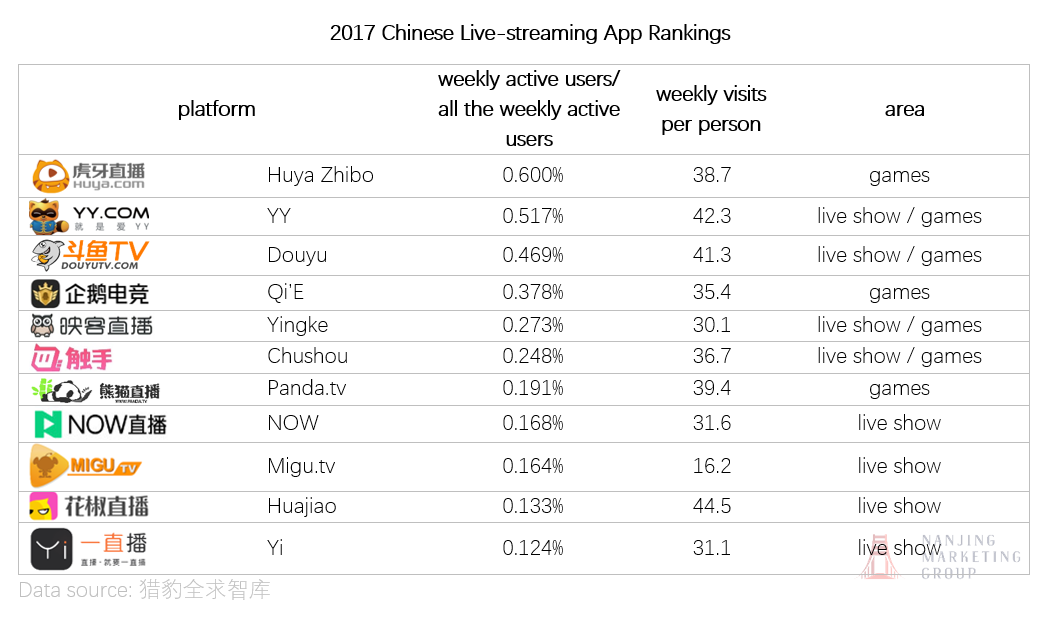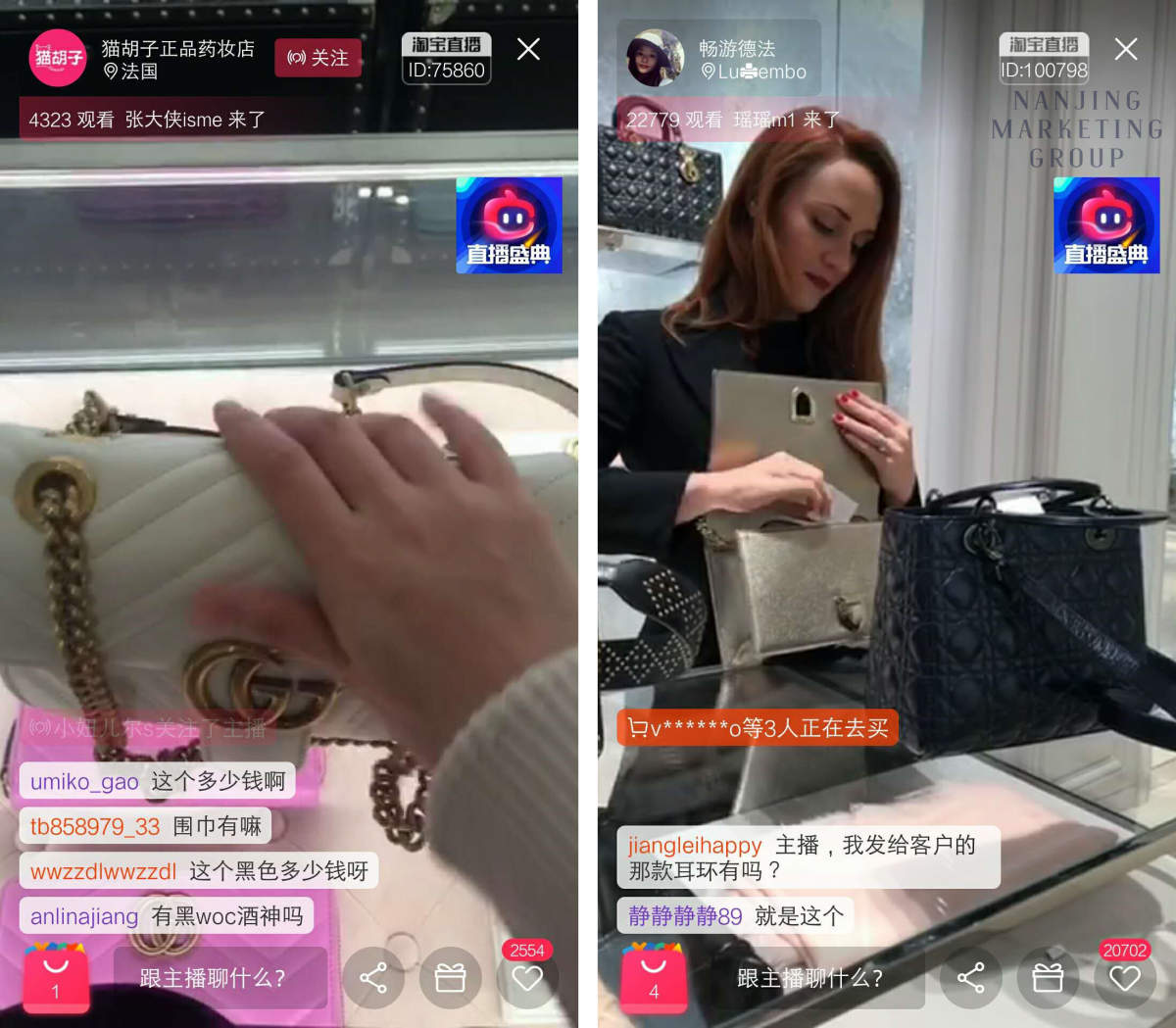When it comes to marketing in China, you can do it the classic way – Baidu Advertising, WeChat and Weibo campaigns are commonly recommended options. You probably have heard of them if you did any China marketing-related research. But what we like to highlight as often as possible is that China is very different from what you know, and it changes quickly too. Chinese competitors know the market very well and will almost certainly be ahead of you, using marketing channels that are not as well-known in the Western world as Baidu. What’s in this month might be out in a few months – or even weeks. Except for some platforms, like WeChat for example, Chinese platforms are not as stable as Facebook or Twitter. The younger Chinese generation chases what’s new, interesting and fun. They are really experience-oriented and don’t hesitate to try out new things.
Okay, so you might ask what’s in now? But you’ve opened the post, so you might already know it’s live streaming (直播 zhibo).
How live-streaming in China works

The live-streaming trend actually started with a Western app, Meerkat, which entered China’s market in 2015. It was shut down soon after, in 2016, but it created a niche that Chinese apps filled in at once. The number of users grew ever since. Why has it gotten so popular? It’s no news that TV and the Internet are censored in China and fake goods are everywhere to be seen, so what the netizens are looking for is transparency. The tendency to move towards real-time action comes from the pursuit of what is authentic and ‘unphotoshopped’. Many KOLs just live-stream their private life, just as Western bloggers do on Snapchat or Instagram. Live-stream hosts (主播 zhubo) are much closer to their fans than popular actors or singers and that’s why they gain so much attention. In China, it’s very important to build a relationship with your viewers, a relationship that resembles a real friendship. A lot of young Chinese people have a very lonely life, especially males in third-tier cities. They post real-time comments and the zhubos answer them while broadcasting so it feels like a face-to-face conversation.
There are more than 120 different live-streaming platforms and apps in China, and they each target different hosts and audiences. The most popular show categories are real-life live streaming, game live streaming and tv-like show live streaming. Some of them are completely free, but some rely on monetizing the broadcast. It might work two ways: it’s either viewer that send some gifts to the zhubos during the show, or zhubos (usually sponsored by brands) give away red packets or goods they like. The other option is zhubos can get a regular salary from the platform they stream on if they gain enough loyal followers.
Chinese Real-life Live-streaming Platforms
Apps: YY, Yingke, Huajiao.
The hosts on these platforms mostly focus on broadcasting their personal life. They let the viewers see the process of choosing clothes, doing morning make-up, commuting to work, going out. They might sing or dance, make a show out of their own skills (or lack of the skills). This area is dominated by pretty girls and handsome guys. In 2016 the woman to man ratio on Huajiao was 3.4/1 and on Yingke 2/1. They mostly just talk to their phones about their daily life and issues, interact with their users, reply to comments. The more viewers they get, the more possible it is that they turn into KOLs. Then they get invited to co-operate with popular brands or attend events and they live-stream the whole process to their fans.
It might not sound very interesting, but it’s a very popular type of show. Nowadays there’s nothing unusual about sharing one’s own private life or taking a glance at someone else’s life, especially if we talk about teenagers or young adults, who spend most of their free time sticking to their smartphones watching other people.
Chinese Gaming Live-streaming Platforms
Apps: Huya, Douyu, PandaTV
Video games have been popular in China long before live–streaming started, but now the industry has moved on to a whole new level. Research company Analysys states that by 2018 the estimated number of video game streaming users in China will reach 300 million. If it was not enough to prove how hot the market has been, in Dec 2017 Google invested 500 mln Yuan (sic!) into one of China’s live-streaming platforms, Chushou. It is focused on mobile games – opposite to, for example, Panda TV which is focused on PC games streaming. The most popular platforms, like these two and Douyu or Huya, have many users, which makes them a great way to reach your target audience if you’re into the gaming business. Nara, NMG’s gaming enthusiast, says that’s how she discovers new games herself and that’s why she recommends it to our customers as a great marketing channel.
These platforms are also commonly used to live-stream gaming events. Some of them are free, but those most important for the industry, like a BlizzCon for example, require gamers to buy a ticket. There are many willing to pay the fee though, as new games and technologies are introduced during the event, and all the game buffs make sure they don’t miss a minute of it. Especially that they favourite zhubos are on the spot to answer their comments immediately.
Chinese E-commerce Live-streaming

Apps: Taobao, Jingdong , Mogujie
The latest trend, very popular among foreign brands as well, is live-streaming on the main Chinese e-commerce platforms, such as Taobao, Tmall, JD and VIP. The platforms are easily accessible and most of the live-streams have a cart button that directs viewers straight to the shopping page. As the results are pretty clear, establishing yourself as a popular influencer on such platforms is an easy way to make money or just a good start to launching your own brand.
Some KOLS are very direct in their sales approach, while others are more subtle. Most of the viewers usually prefer the latter, when they still feel the product is recommended because it’s worth buying, not just because the KOL is paid to sell it. Another way is just to hire an influencer to present your product. So if you want to sell a jacket, for example, you’d have a person wearing it in front of the camera, showing every single angle, sharing how it feels and responding live to all of the comments viewers ask – and there would be a lot of questions, believe me. Chinese customers always ask a lot of questions to make sure they buy exactly what they want.
What else is streamed? Lately, Starbucks opened a premium store in Shanghai and they live-streamed the grand opening on Taobao. They got almost 180,000 viewers during the 3-hour-long broadcast. It’s not surprising as the new store was a hot topic in media before, so everyone was dying to see what it looked like, but the queue was (and probably still is) way too long for everyone to attend. As they co-operated with Alibaba, the show was featured prominently on Taobao’s main page. However, they’re not the only foreign brand to stream a store’s opening. Guerlain, for example, has done it as well. Things to remember: discounts and promotion. Make sure you have a popular KOL talking about the event and you offer some good deals exclusively for the viewers.
As there’s no YouTube in China, e-commerce platforms are also good channels to use to live-stream popular events. Tmall hosted an exclusive show when Apple launched its new iPhone X and Samsung live-streamed their own show on the Taobao’s channel.
Still, the busiest time for live-streaming is Taobao’s Double Eleven. That time customers may join many different streams with KOLs and celebrities included. They also offer even more coupons and discounts for the viewers. The number of viewers on Tmall exceeded one billion during last year’s festival.
I’m not sure if you’ve heard of the daigou (代购) phenomenon in China. They are luxury brand go-betweens. They buy goods abroad and send it to the buyer in China. As it’s very important for their business to be trusted, they often live-stream the buying and sending process on their e-commerce channels.
Chinese Education Live-Streaming

Apps: Tencent Ketang, Niuzai, Zhiniu
If you’re in the education industry, you might have noticed there isn’t much innovation when it comes to marketing channels, did you? And it certainly is a problem. Your goal is to attract young people that look for innovation and follow the latest trends, but catching them seems like a huge issue. Have you tried live-streaming then?
Selling your school or courses might be tricky if you do not represent the world’s best universities. Chinese students tend to choose schools they’ve already heard of. So, your job is to create a trusted brand image for the institution you represent. How can that be done? There are at least two ways we recommend you try.
One, share your knowledge. It just like content marketing. You want to share some value in order to gain the students’ interest and trust. You offer a high-end stock course? Good, teach your viewers that. Do not just sell sell sell.
Second, make it feel real. You represent a university? Make a KOL out of your students, Chinese students preferably. Let them show their campus life, classrooms, classes, extra activities, let them share how they adapt to the new country, what they eat, how they spend their free time. Make sure the school is no longer just a picture on the Internet, it must feel real and trustworthy both to the students and their parents.
One of our clients, for example, use live-streaming to build a good relationship with their future students. Conestoga College staff are live every month to talk about classes, university activities and student life. They answer any questions students or their parents want to ask. You might want to have a look here.
Our experience
Live-streaming may sound a bit confusing at the very beginning. There so many apps and platforms that seem to be so similar. Which one to choose? How to use it? What to pay attention to?
Well, we understand the confusion. Let us say – the most important part is always the content you offer. If you feel it’s good enough, you should not hesitate to try live-streaming. It’s more like a natural step in your China marketing. It’s yet another thing you either catch up on or you stay behind.
Few tips here:
- Live-streaming is all about interaction. Never leave your viewers unattended, they’ll get bored quicker than you think. Ask questions, answer their comments.
- Make it a good show, your viewers want to learn something new, they want to have fun. Try to give them something other channels don’t.
- A good way to attract more viewers is a giveaway. It may be a product or a discount you offer in exchange for something.
- Be consistent. Set a weekly broadcast, let’s say Tuesdays 6 p.m. And be on time, don’t change it, so that your viewers know when to show up.
Good luck!
This post is based on Nara’s experience as a marketer and a dedicated live-stream user.











